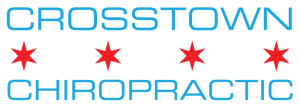
Rock Climbing Series, Part I: Overuse Injuries
Rock Climbing and Injuries
Rock climbing has increased in popularity over the last few years, and can be a great way to stay fit and healthy. Without proper care and attention, climbers can sustain some painful injuries that may keep them off the rocks for longer than desired.

This series will cover a variety of common rock climber injuries with insightful approaches for treatment and prevention.
The Basics of an “Overuse” Injury:
Therapists often use the term “overuse injury” to describe the cause of pain. Overuse essentially means performing the same activity or movement over and over.
This type of injury is common in sports, physical labor, and even office work. Repetitive activity such as running, painting, or using a computer mouse can lead to “overuse.”
The basics to preventing overuse injuries:
1- Try to identify what the activity is. If you play a competitive sport that has a classic injury such as tennis elbow, this may be very easy. It can be more difficult to figure out subtle causes such as workstation ergonomics. You may need to be a detective to get to the root of your problem!
2- Cross-train: If you weightlift or rock climb, yoga may be a great addition to minimize muscle tension while increasing overall flexibility. If you are a runner, strength train to engage your core and give your legs rest days.
3- Balance: Identify tight muscles to stretch and weak muscles to strengthen. Balancing your strengths and weaknesses is one of the reasons to cross-train. Example: Weightlifting can lead to overdevelopment of the chest (rounded shoulders). Add exercise such as rowing to strengthen the back muscles and restore some balance.
4- Alternate activities: In a gym setting, it is easy to do multiple types of exercise in the same day. Most of us have heard about the benefits of interval training. Use this type of workout to give your arms and fingers a rest before returning to the wall. Alternate climbing with short sessions of other activities, such as jogging, to break up a workout. Use the same principle of interval training while at work. Sit up straight and check emails for an hour, pace while you take a phone call, and try to stand when opening physical mail. Be creative!
5- Rest: Even elite athletes know there is benefit to taking days off to recuperate and heal.
6- Dynamic warmups: If this term is foreign to you, make sure to do some research into a dynamic warmup. Dynamic stretching incorporates movement opposed to static stretching. Warm up properly before engaging in athletic events or even work activities.
7- Use good old fashion ice to manage inflammation. Icing injuries is sometimes up for debate, however, using ice as soon as pain begins is the widely-accepted method to reduce pain faster (never ice longer than 20 minutes). Chronic pain often does best with moist heat.
Overuse injuries are one of the most common reasons people struggle with chronic pain. Finding balance in your workouts and daily work routine is key to managing this type of condition.
The first step is identifying the problem so you can fix it. The second is to treat the pain. The most important step is being consistent with home care to prevent injuries from returning again and again. After you manage your pain, if you continue to do the same activities daily without modifications your injuries are almost sure to return.
If pain does not resolve, see a professional for help. Overuse injuries often respond well to chiropractic treatment, physical therapy, KT tape, and or massage.
Your Road To Recovery Starts Here
Helping You Achieve Optimum Results Is Just A Phone Call (Or Email) Away
Evening & Weekend Appointments Available
(773) 961-8951
Disclaimer: The information on our blog, social media posts, and website should not be used to substitute professional medical advice or emergency treatment. Do not use this information to diagnose a health problem or to develop a treatment plan for a condition without consulting a qualified health care provider. If you're in a life-threatening or emergency medical situation, seek medical assistance immediately.
